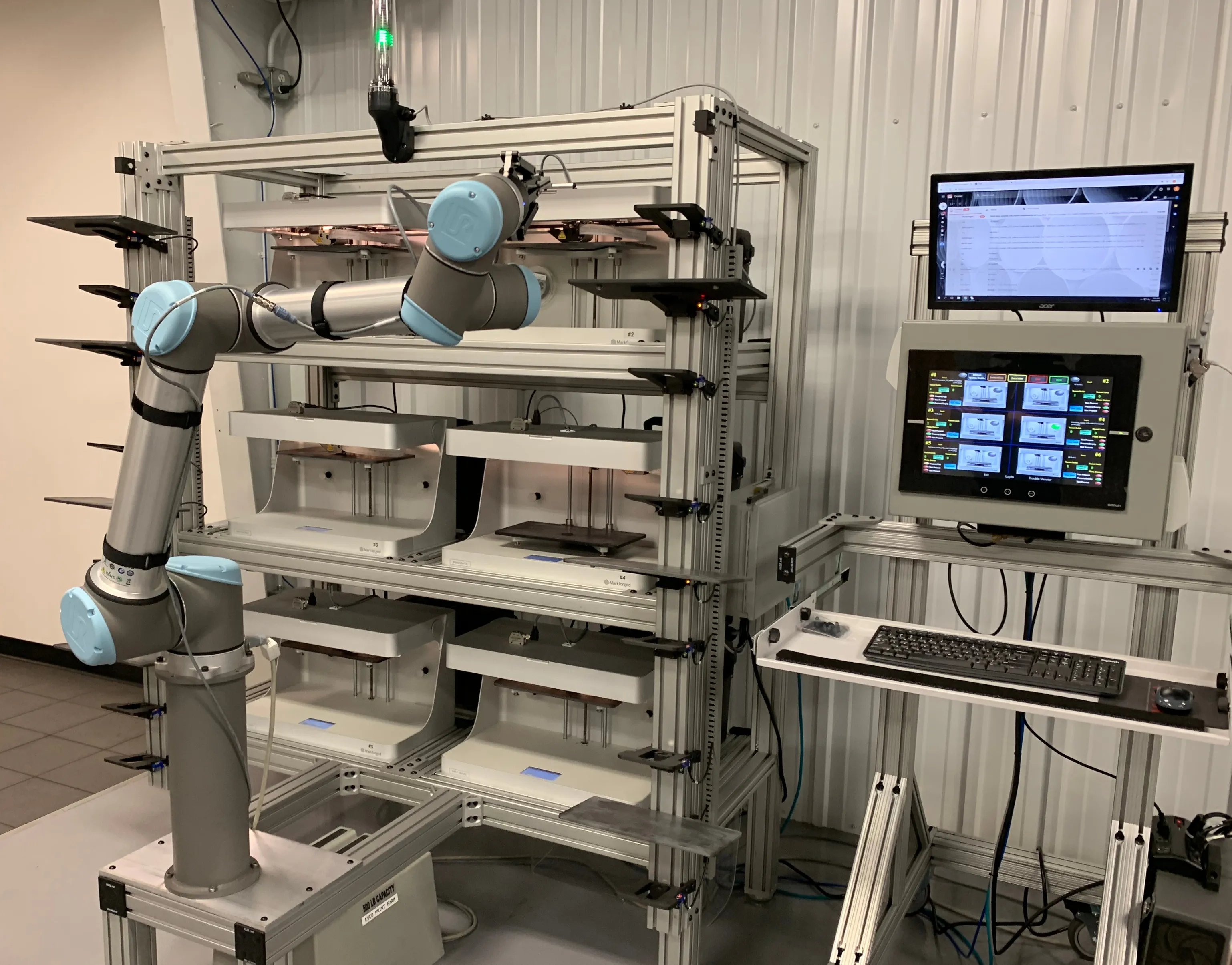
The Evolution of Automated 3D Printing Systems
The journey of 3D printing from a niche prototyping technology to a mainstream manufacturing solution has been remarkable. Central to this transformation has been the evolution of automation within 3D printing systems. This article explores the key stages of this evolution, from manual interventions to the dawn of intelligent, lights-out factories.
The Early Days: Manual Processes and Prototyping
In its infancy, 3D printing was synonymous with rapid prototyping. The process was heavily reliant on manual labor. An operator was required to manually load the build platform, start the print job, monitor the process for errors like filament jams or layer shifting, and finally, perform the post-processing. This included manual removal of support structures, sanding, and finishing. The systems had limited sensing capabilities, making them vulnerable to failed prints and requiring constant human supervision.

The Shift to Production: Introducing Basic Automation
As the potential for 3D printing in end-part production grew, so did the need for reliability and repeatability. This led to the first wave of automation features:
- Heated Chambers and Automated Bed Leveling: These features improved first-layer adhesion and overall print success, reducing the need for manual calibration.
- Filament Run-out Sensors: These sensors would pause the print if the material ran out, allowing an operator to reload and resume, preventing a complete print failure.
- Basic Fleet Management Software: Software emerged that allowed users to monitor multiple printers from a single interface, a crucial step for small-scale production environments.
Key Automated Features in Transitional 3D Printers
| Feature | Function | Impact |
|---|---|---|
| Auto Bed Leveling | Automatically calibrates the distance between the nozzle and the print bed. | Improved first-layer adhesion and reduced manual setup time. |
| Filament Sensor | Detects when filament spool is empty or broken. | Prevented mid-print failures, allowing for intervention. |
| Network Connectivity | Allows remote monitoring and file transfer. | Reduced the need for physical presence at the printer. |
The Rise of Integrated Automated Workflows
The current era is defined by fully integrated systems that automate the entire printing workflow, from start to finish. This is particularly evident in industrial and professional settings.

Post-Processing Automation
One of the most labor-intensive aspects has been post-processing. Automated solutions have now emerged, including:
- Support Removal Systems: Chemical baths or mechanical systems that automatically dissolve or break away support material.
- Automated Finishing Stations: Robotic arms that sand, polish, or paint printed parts to a consistent finish.
Robotic Integration and Lights-Out Manufacturing
The highest level of automation involves integrating 3D printers with industrial robotics. In a lights-out factory scenario:
- A central management software schedules and dispatches print jobs.
- Robotic arms or gantry systems remove finished prints from the build platform.
- The same system may prepare the platform for the next job (e.g., applying a new adhesive layer).
- Finished parts are transported via autonomous guided vehicles (AGVs) to post-processing or inspection stations.
The Future: Intelligent and Adaptive Systems
The next frontier is cognitive automation, where 3D printing systems become self-monitoring and self-correcting.
Artificial Intelligence and Machine Learning
AI algorithms are being integrated to analyze print data in real-time. Using cameras and sensors, these systems can detect anomalies like warping or under-extrusion and automatically adjust printing parameters to compensate, or even halt a print deemed to be failing, saving time and material.

Closed-Loop Control and Quality Assurance
Future systems will feature true closed-loop control, where sensor feedback continuously adjusts the process to ensure dimensional accuracy and material properties. In-process quality assurance will become standard, with each part being digitally validated against its CAD model as it is being built.
Comparative Evolution of 3D Printing Automation
| Era | Primary Focus | Level of Automation | Key Enabling Technologies |
|---|---|---|---|
| Early (1980s-2000s) | Prototyping | Low (Manual) | Basic STL slicing, manual calibration |
| Transitional (2010-2018) | Professional & Small-Batch Production | Medium (Semi-Automated) | Auto bed leveling, filament sensors, fleet software |
| Integrated (2019-Present) | Industrial Manufacturing | High (Fully Automated Workflows) | Robotic part handling, automated post-processing, MES integration |
| Future (Next-Gen) | Adaptive & Lights-Out Factories | Very High (Intelligent) | AI/ML, in-situ monitoring, closed-loop control, digital twins |
In conclusion, the evolution of automated 3D printing systems is a story of progressively removing human intervention from the manufacturing process. This journey from manual prototyping tools to intelligent, self-optimizing production cells is fundamentally changing how we design and manufacture goods, paving the way for a more efficient, customizable, and decentralized future for production.
